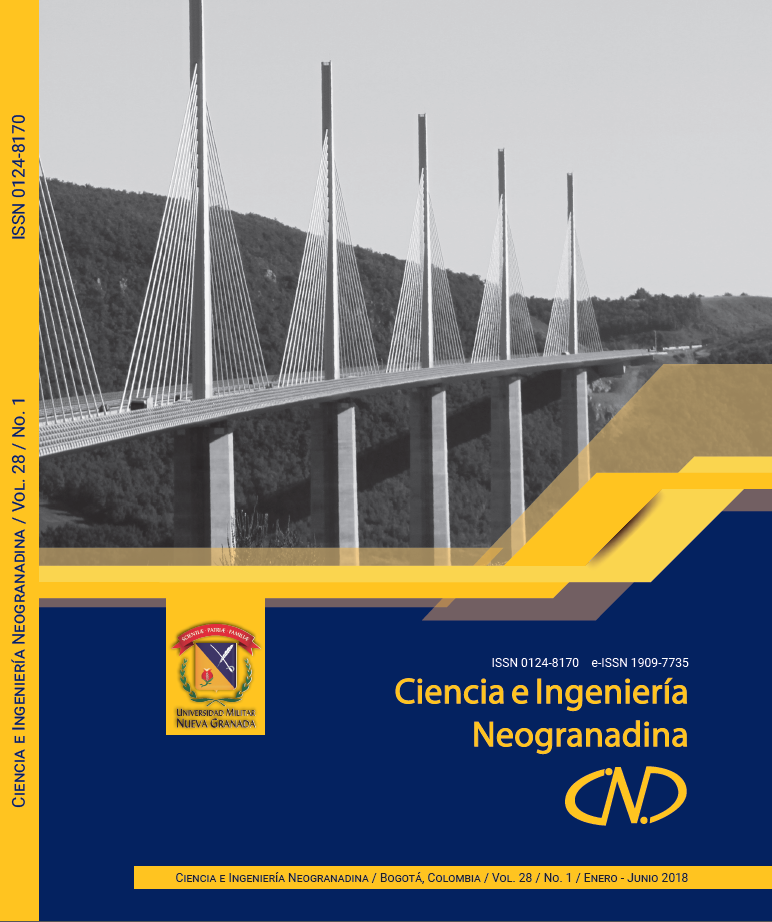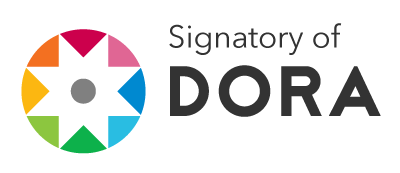Proposal for technological improvement of green roofs for the Andean tropical climate
Abstract
Risk management through increased surface run-off in urban areas requires intervention from multiple environmental, public health, social and economic approaches. The green infrastructure provides solutions of growing interest for its environmental benefits and potential financial advantage. This article proposes a technological improvement for the adaptation of green roof to the Andean tropical climate, regarding its hydrological behavior, for which an experimental setup was developed with six modules of extensive green roof and one control module (roofing sheet only). The experimental setup allowed the obtaining twenty-one data precipitation events, modifying the configuration of two experimental factors, plant species with six variations and substrates heights with three variations and three additional events to verify the effect of the roof slope variation as a third factor. The obtained data were processed for the calculation of hydrological variables of interest (precipitation, run-off, duration of the event, previous dry time) expressing event characteristics and the hydrological behavior indicators (runoff coefficients based on volume Cv and peak flow Cp and lagtime K) and their statistical analysis, allowed to identify which experimental factors have or do not have significant influence on these indicators. Finally, tools were developed for the simulation of hydrological variables and indicators from external precipitation series and their implementation in a design tool that selects the green roof configurations that present the best hydrological behavior.
Downloads
References
Secretaría Distrital de Ambiente. Sistemas Urbanos de Drenaje Sostenible SUDS para el Plan de Ordenamiento Zonal Norte POZN. Bogotá: Secretaría Distrital de Ambiente, 2011.
J. Rodríguez Bayón, D. Castro Fresno, J. Rodríguez Hernández y F. Ballester Muñoz, “Sistemas urbanos de drenaje sostenible (SUDS),” Interciencia. Revista de ciencia y tecnología de América, vol. 30, no. 5, pp. 255-260, 2005.
T. D. Fletcher, W. Shuster, W. F. Hunt, R. Ashley et al. “SUDS, LID, BMPs, WSUD and more – The evolution and application of terminology surrounding urban drainage,” Urban Water Journal, vol. 12, no. 7, pp. 525-542, 2014.
Q. Zhang, L. Miao, X. Wang, D. Liu et al., “The capacity of greening roof to reduce stormwater runoff and pollution,” Landscape and Urban Planning, vol. 144, pp. 142-150, 2015. DOI: https://doi.org/10.1016/j.landurbplan.2015.08.017
W. C. Li y K. K. A. Yeung, “A comprehensive study of green roof performance from environmental perspective,” International Journal of Sustainable Built Environment, vol. 3, no. 1, pp. 127-134, 2014. DOI: https://doi.org/10.1016/j.ijsbe.2014.05.001
S. Galarza-Molina, A. Torres, P. Rengifo, A. Puentes et al., “The benefits of an eco-productive green roof in Bogota, Colombi,” Indoor and Built Environment, 2016. DOI: https://doi.org/10.1177/1420326X16665896
K. Vijayaraghavan, “Green roofs: A critical review on the role of components, benefits, limitations and trends,” Renewable and Sustainable Energy Reviews, vol. 57, pp. 740-752, 2016. DOI: https://doi.org/10.1016/j.rser.2015.12.119
M. Razzaghmanesh, S. Beecham y C. J. Brien, “Developing resilient green roofs in a dry climate,” Science of The Total Environment, vol. 490, pp. 579-589, 2014. DOI: https://doi.org/10.1016/j.scitotenv.2014.05.040
Y. Li y R. W. Babcock, “Green roof hydrologic performance and modeling: a review,” Water Science & Technology, vol. 69, no. 4, pp. 727-738, 2014. DOI: https://doi.org/10.2166/wst.2013.770
E. Vanuytrecht, C. Van Mechelen, K. Van Meerbeek, P. Willems et al., “Runoff and vegetation stress of green roofs under different climate change scenarios,” Landscape and Urban Planning, vol. 122, pp. 68-77, 2014. DOI: https://doi.org/10.1016/j.landurbplan.2013.11.001
J. Yang y Z.-H. Wang, “Physical Parameterization and Sensitivity of Urban Hydrological Models: Application to Green Roof Systems,” Building and Environment, vol. 75, pp. 250-273, 2014. DOI: https://doi.org/10.1016/j.buildenv.2014.02.006
C. Lamera, G. Becciu, M, C. Rulli y R. Rosso, “Green roofs effects on the urban water cycle components,” Procedia Engineering, vol. 70, pp. 988-997, 2014. DOI: https://doi.org/10.1016/j.proeng.2014.02.110
C. Berretta, S. Poë y V. Stovin, “Moisture content behaviour in extensive green roofs during dry periods: The influence of vegetation and substrate characteristics,” Journal of Hydrology, vol. 511, pp. 374-386, 2014. DOI: https://doi.org/10.1016/j.jhydrol.2014.01.036
IDEAM, El medio ambiente en Colombia, (2nd ed.), Cap. 3: La atmósfera, el tiempo y el clima. Bogotá: IDEAM, 2001.
Instituto de Hidrología, Meteorología y Estudios Ambientales [Ideam], “Atlas Climatológico de Colombia,” Ideam, 2017. [En línea]. Disponible en: http://atlas.ideam.gov.co/visorAtlasClimatologico.html
A. Puentes Suavita, “Techos verdes utilizados como elementos de regulación de la escorrentía en Bogotá,” Tesis de Maestría, Facultad de Ingeniería, Pontificia Universidad Javeriana, Bogotá, 2014.
A. E. Torres-Abello, “Metodología para la Estimación de Incertidumbres Asociadas a Concentraciones de Sólidos Suspendidos Totales Mediante Métodos de Generación Aleatoria,” TecnoLógicas, no. 26, pp. 181-200, 2011. DOI: https://doi.org/10.22430/22565337.64
W. S. Cleveland, “Robust locally weighted regression and smoothing scatterplots,” Journal of the American Statistical Association, vol. 74, no. 368, pp. 829-836, 1979.
M. C. Mariani y K. Basu, “Local regression type methods applied to the study of geophysics and high frequency financial data,” Physica A: Statistical Mechanics and Its Applications, vol. 410, pp. 609-622, 2014. DOI: https://doi.org/10.1016/j.physa.2014.05.070
L. Plazas-Nossa, “Forecasting of UVVIS spectrometry time series for online water quality monitoring in operating urban sewer systems,” Tesis Doctoral, Facultad de Ingeniería, Pontificia Universidad Javeriana, Bogotá, 2016.
N. S. Raghavendra y P. C. Deka, “Support vector machine applications in the field of hydrology: A review,” Applied Soft Computing, vol. 19, pp. 372-386, 2014. dOI: https://doi.org/10.1016/j.asoc.2014.02.002
F. Granata, R. Gargano y G. de Marinis, “Support Vector Regression for Rainfall-Runoff Modeling in Urban Drainage: A Comparison with the EPA’s Storm Water Management Model,” Water, vol. 8, no. 3, pp. 69, 2016. DOI: https://doi.org/10.3390/w8030069
R Core Team. (2016). R: A language and environment for statistical computing. En URL https://www.r-project.org/.
E. L. Villarreal y L. Bengtsson, “Response of a Sedum green-roof to individual rain events,” Ecological Engineering, vol. 25, no. 1, pp. 1-7, 2005. DOI: https://doi.org/10.1016/j.ecoleng.2004.11.008











